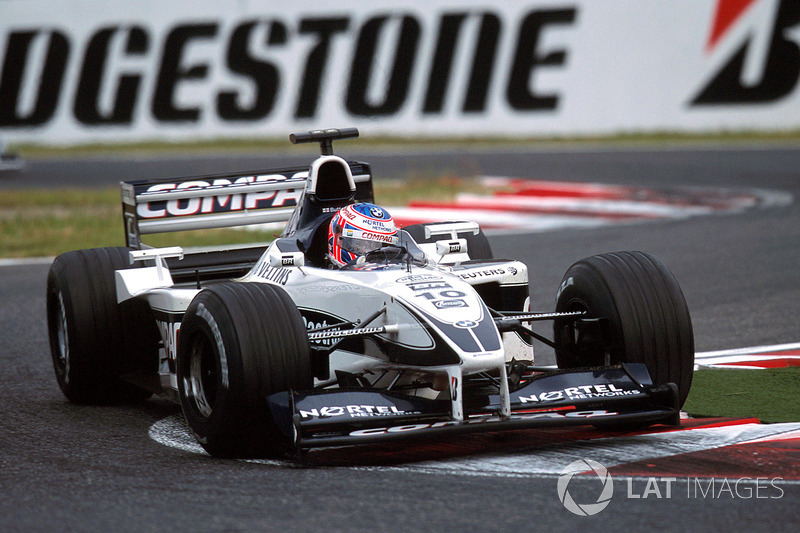The Hells Angels: History, Organization, And Impact

Table of Contents
A History of the Hells Angels
Early Years and Founding
The Hells Angels' story begins in post-World War II America. Founded in 1948 in San Bernardino, California, the club emerged from a confluence of factors: returning veterans seeking camaraderie, a burgeoning motorcycle culture, and a societal yearning for rebellion. Early members, many of whom were ex-servicemen, bonded over their shared experiences and a love of motorcycles. Their initial activities centered around riding, socializing, and a growing sense of brotherhood, although early instances of violence and clashes with law enforcement were not uncommon. Membership grew steadily in those formative years, laying the groundwork for the club's future expansion.
Expansion and Territorial Disputes
From their California roots, the Hells Angels expanded aggressively across the United States and internationally, establishing chapters in various cities and countries. This expansion was often driven by a desire for increased power, territory, and control over lucrative criminal activities. The club's growth, however, wasn't without conflict. Territorial disputes with rival motorcycle clubs, such as the Mongols and Bandidos, frequently erupted into violent confrontations, marked by brawls, bombings, and even murders. Key figures within the club played crucial roles in orchestrating this expansion, often leveraging existing networks and exploiting opportunities for criminal enterprise. These conflicts and the club's willingness to use violence solidified their reputation as a powerful and dangerous organization.
Legal Battles and Public Perception
The Hells Angels have maintained a long and tumultuous relationship with law enforcement, leading to numerous legal battles and a fluctuating public image. Major drug trafficking charges, racketeering indictments, and violent crimes have resulted in high-profile arrests and convictions. Media portrayals, ranging from romanticized depictions in popular culture to sensationalized news coverage, have shaped public perception, contributing to both fascination and fear surrounding the club. Over time, the Hells Angels' image has evolved, shaped by ongoing criminal activities and evolving media narratives.
Understanding the Hells Angels' Organization
Chapter Structure and Hierarchy
The Hells Angels operate under a hierarchical structure, with individual chapters reporting to a national or international governing body. Each chapter has its own president, vice president, sergeant-at-arms, and other officers, each with specific roles and responsibilities. Decisions are made through a combination of chapter meetings and higher-level consultations, although the exact processes are shrouded in secrecy. Individual chapters maintain a degree of autonomy but are ultimately subject to the directives of the overall organization. Membership is highly selective, with a rigorous initiation process and specific requirements, including a demonstrated commitment to the club’s values, often including an unwavering loyalty and willingness to engage in criminal activities.
Activities and Revenue Streams
The Hells Angels are primarily known for their involvement in various criminal activities. Their primary revenue streams often include drug trafficking (methamphetamine, cocaine, etc.), extortion, theft, and weapons trafficking. These illegal operations are meticulously organized and represent the core of the club's financial strength. While some attempt to portray a veneer of legitimacy, any legitimate businesses often serve as fronts for money laundering or other criminal activities. The economic strategies employed are focused on maintaining control over territories and networks, maximizing profits, and minimizing legal exposure.
Global Presence and International Chapters
The Hells Angels boast a significant global presence, with chapters established in numerous countries across the world. However, their activities and operational methods vary depending on the local context and legal frameworks. Cultural differences impact their strategies, alliances, and the level of overt criminal activity. International conflicts and alliances with other criminal organizations exist, further solidifying their international network. Globalization poses both challenges and opportunities for the Hells Angels, requiring adaptability and strategic partnerships to navigate varying legal environments and maintain control over their international operations.
The Impact of the Hells Angels
Societal Influence and Cultural Representation
The Hells Angels have significantly influenced popular culture, appearing in numerous movies, songs, and books. These portrayals often oscillate between romanticizing their rebellious image and showcasing the darker aspects of their criminal activities. The media’s representation, both positive and negative, has powerfully shaped public perception and understanding of the club. Their symbolism, including the iconic “death head” logo, has acquired a level of cultural significance, becoming instantly recognizable and representing a potent symbol of rebellion and outlaw biker culture.
Law Enforcement Strategies and Countermeasures
Law enforcement agencies worldwide employ various strategies to combat the Hells Angels, including surveillance, undercover operations, and targeted prosecutions. Success in these efforts varies greatly due to the club’s secretive nature, intricate organizational structure, and willingness to employ violence. Investigating and prosecuting Hells Angels members presents significant challenges, requiring extensive resources and complex legal strategies. Technological advancements, such as improved surveillance and data analysis, are continually being implemented to improve law enforcement’s effectiveness.
Long-term Effects and Legacy
The Hells Angels’ legacy is multifaceted and enduring. Their contribution to outlaw motorcycle culture is undeniable, shaping the aesthetics and, unfortunately, the criminal aspects of the subculture. Their enduring notoriety and the ongoing challenges they present to law enforcement ensure their lasting impact on society. The future trajectory of the organization will depend on factors like law enforcement pressures, internal conflicts, and the ever-evolving global landscape of organized crime.
Conclusion:
The Hells Angels Motorcycle Club represents a complex and enduring phenomenon. Their history is one of rebellion, expansion, and criminal enterprise, leaving an undeniable mark on popular culture and law enforcement. Understanding their organization, operations, and societal impact requires a nuanced approach, acknowledging both the romanticized image and the harsh realities of their activities. To delve deeper into this fascinating and complex subject, consider exploring further resources such as books on organized crime, documentaries about outlaw motorcycle clubs, and reputable news articles detailing specific cases and investigations involving the Hells Angels. Learning more about the Hells Angels and related topics will provide a more comprehensive understanding of their significant and long-lasting influence.

Featured Posts
-
 Why Current Stock Market Valuations Shouldnt Deter Investors A Bof A Analysis
May 25, 2025
Why Current Stock Market Valuations Shouldnt Deter Investors A Bof A Analysis
May 25, 2025 -
 Ongoing Severe Storms Trigger Flood Advisories In Miami Valley
May 25, 2025
Ongoing Severe Storms Trigger Flood Advisories In Miami Valley
May 25, 2025 -
 Footballer Kyle Walkers Post Match Activities In Milan
May 25, 2025
Footballer Kyle Walkers Post Match Activities In Milan
May 25, 2025 -
 Jenson Fw 22 Extended A Deeper Look At The Collection
May 25, 2025
Jenson Fw 22 Extended A Deeper Look At The Collection
May 25, 2025 -
 Roland White Analyses Armando Iannuccis Approach To Comedy Writing On Bbc 1
May 25, 2025
Roland White Analyses Armando Iannuccis Approach To Comedy Writing On Bbc 1
May 25, 2025
